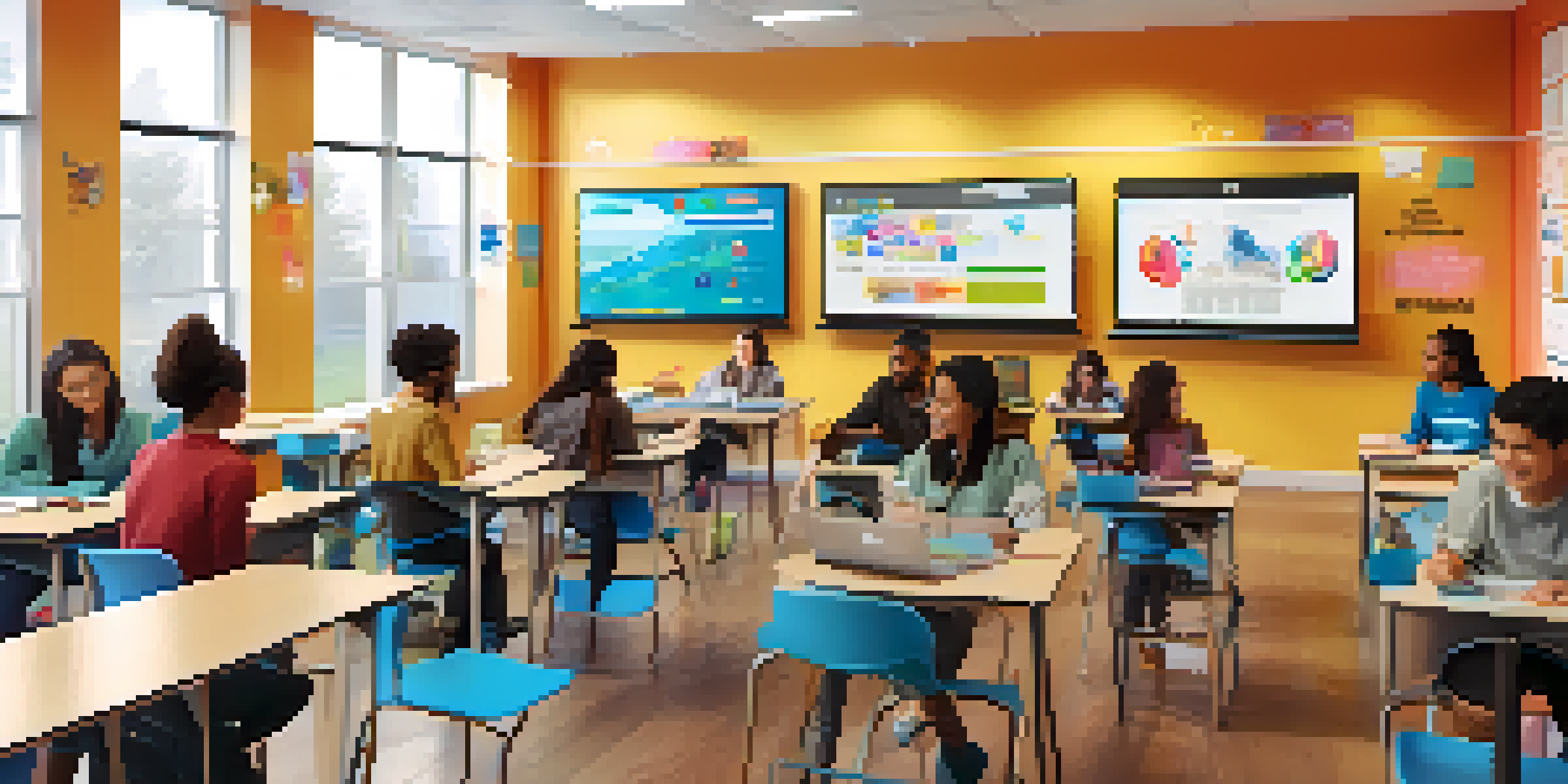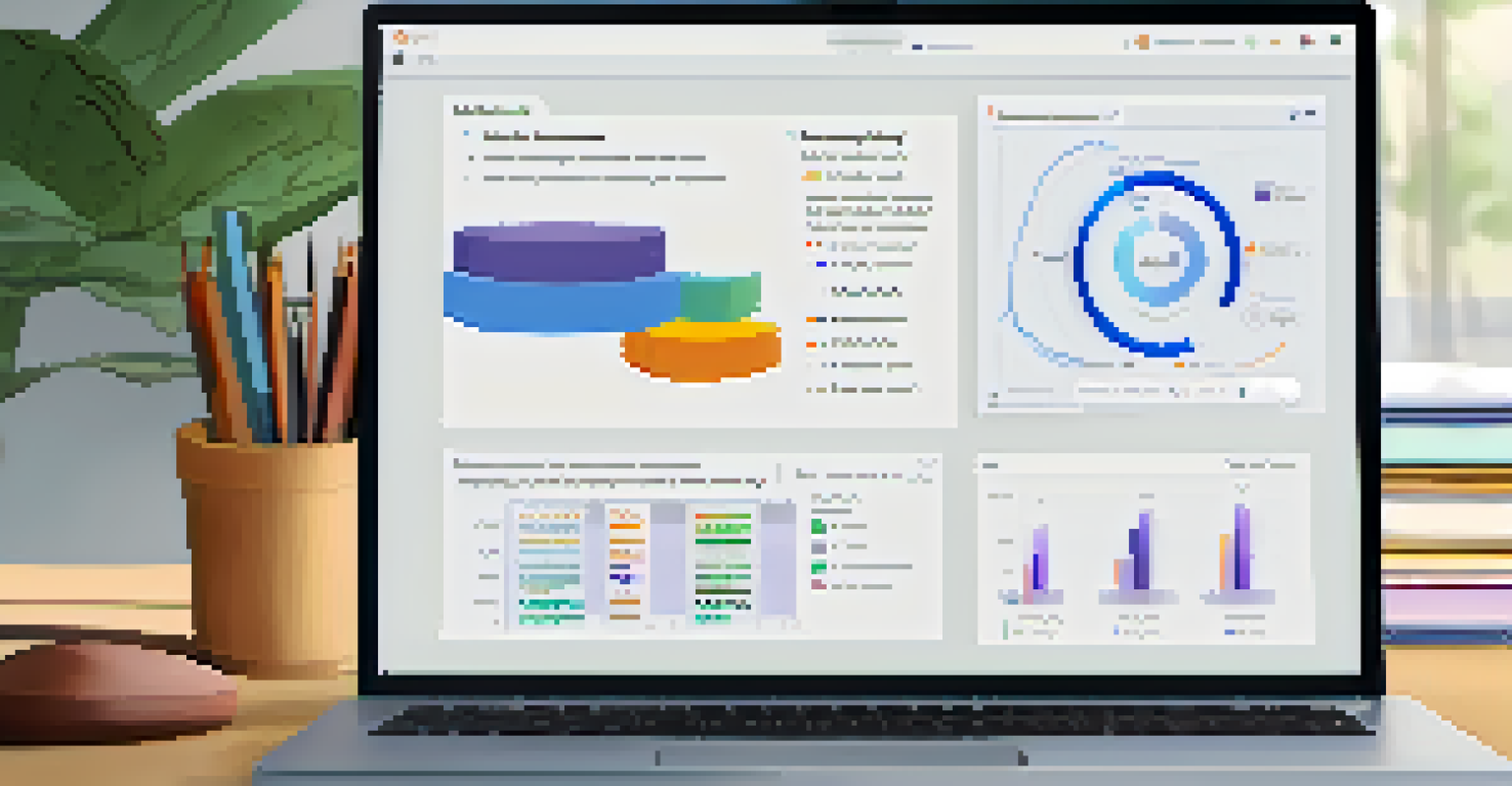The Rise of AI in Educational Technology: Transforming Learning

Understanding the Role of AI in Education Today
Artificial Intelligence (AI) is rapidly changing the landscape of education. From personalized learning experiences to intelligent tutoring systems, AI is becoming an integral part of how we approach teaching and learning. As educators and students alike embrace this technology, it’s important to understand its potential and limitations.
Education is the most powerful weapon which you can use to change the world.
One of the most exciting aspects of AI in education is its ability to tailor learning experiences to individual needs. For example, platforms like Khan Academy use AI algorithms to track student progress and suggest resources that align with their unique learning pathways. This personalized approach makes learning more engaging and effective.
However, while AI offers many benefits, it also raises questions about data privacy and equity in access. Ensuring that all students can benefit from these advancements is crucial as we move forward into the era of AI-powered education.
AI-Powered Tools Enhancing Student Engagement
AI tools are not just about personalized learning; they also play a significant role in enhancing student engagement. Interactive AI-driven platforms can provide immediate feedback, making learning more dynamic and responsive. For instance, chatbots can assist students with their queries 24/7, reducing frustration and fostering a supportive learning environment.

Another great example is gamified learning experiences that incorporate AI elements. These tools keep students motivated by turning educational content into interactive games. This approach not only makes learning fun but also reinforces key concepts in an engaging way.
AI Personalizes Learning Experiences
AI can tailor educational content to meet individual student needs, enhancing engagement and effectiveness.
By using AI to create more interactive and enjoyable learning experiences, educators can capture students' attention and promote a deeper understanding of the material.
Adaptive Learning: Customizing the Educational Journey
Adaptive learning technology uses AI to adjust the difficulty of tasks based on student performance. This means that if a student is struggling with a particular concept, the system can offer additional resources or easier questions to help them catch up. It's like having a personal tutor available at all times, guiding learners through their educational journeys.
The great use of a life is to spend it for something that will outlast it.
For example, platforms like DreamBox Learning adapt in real-time to student inputs, modifying lessons to ensure each learner's needs are met. This helps prevent students from feeling overwhelmed or bored, keeping them actively engaged.
The result is a more efficient learning process where students can progress at their own pace, ultimately leading to better outcomes and a greater love for learning.
AI in Assessment: Streamlining Evaluation Processes
Assessment is a crucial component of education, and AI is transforming how we evaluate student performance. Traditional assessments can be time-consuming and often fail to capture a student’s full potential. AI-driven assessment tools can analyze student work quickly and provide detailed feedback, helping educators understand where each student stands.
For instance, AI can assist in grading essays and providing personalized feedback on areas for improvement. This not only saves teachers valuable time but also offers students insights that they may not receive from traditional grading methods.
AI Enhances Accessibility in Education
AI technologies are improving accessibility for students with disabilities, ensuring equitable learning environments.
Moreover, AI can help identify patterns in student data, allowing educators to spot trends and intervene early when students are at risk of falling behind.
Enhancing Accessibility with AI Technologies
AI is also making strides in enhancing accessibility for students with disabilities. Tools like speech recognition and text-to-speech software enable learners with visual or hearing impairments to engage with educational content more effectively. This inclusivity is essential for creating equitable learning environments.
For example, AI-driven captioning services can provide real-time transcription of lectures, allowing students with hearing impairments to follow along seamlessly. Similarly, personalized learning apps can adjust content presentation to suit individual accessibility needs.
By leveraging AI technologies, educators can ensure that all students, regardless of their challenges, have access to the tools they need to succeed.
The Future of AI in Education: Opportunities and Challenges
As we look ahead, the future of AI in education holds immense potential. We can expect to see even more sophisticated tools that can mimic human-like interactions, creating a more immersive learning experience. However, with these advancements come challenges, particularly regarding ethical considerations and the need for teacher training.
It's essential for educators to remain informed about AI technologies and how to integrate them effectively into their teaching practices. Professional development programs will play a vital role in equipping teachers with the skills they need to leverage AI in their classrooms.
Future Challenges of AI in Education
As AI continues to evolve in education, ethical considerations and teacher training remain crucial for effective integration.
Ultimately, while AI can enhance education, it should complement, not replace, the invaluable role of teachers in fostering meaningful learning experiences.
Conclusion: Embracing AI for a Brighter Learning Future
In conclusion, the rise of AI in educational technology is transforming the way we learn and teach. From personalized learning journeys to enhanced accessibility, AI offers numerous benefits that can significantly improve educational outcomes. As we continue to embrace these innovations, it’s crucial to consider how we can implement them responsibly and ethically.
By fostering a collaborative environment where educators, students, and AI can work together, we can create a more engaging and inclusive educational landscape. The future of learning is not just about technology; it’s about enhancing human connections and creating opportunities for all learners.

As we navigate this new era, let’s remember that the goal of education is to inspire and empower students to reach their full potential, and AI is simply a tool that can help us achieve that.